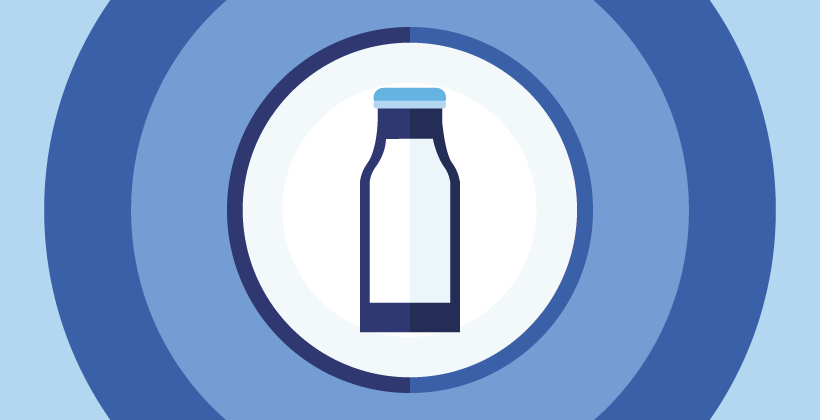Climate change, how will it affect how safe your food is?
Last Updated : 30 August 2023It's becoming increasingly difficult to ignore the impact that our actions are having on the planet's climate. While we grapple with the consequences of our choices as a society, one critical concern that often goes unmentioned is the safety of the food we consume.1 In this article, we will dive into how climate change can disrupt our ability to produce enough safe and nutritious food to feed the growing global population.
What is climate change, and how can it impact our food?
Climate change refers to long-term shifts in temperatures, rainfall and relative humidity, and more in general weather patterns. Human activities that release greenhouse gases into the atmosphere (e.g., burning of fossil fuels, agriculture and oil and gas operations) have been the main driver of climate change. Greenhouse gases act like a blanket wrapped around the Earth, trapping the sun's heat and leading to increased temperatures, extreme weather events and negative impacts on ecosystems, economies and human health.
Food security implications
Climate change is generally seen as having a negative impact on both food security, particularly in developing countries, and food safety.2-5 In Europe, the European Food Safety Authority (EFSA) has identified climate change as a driver (i.e., a new or existing risk factor that is changing in nature or magnitude) for emerging safety risks in food and feed in the mid- or long-term.6

Emerging risks can result in economic losses for farmers and threaten food security as regions confront new threats previously absent from their environment. How? Changes in temperature, humidity, rainfall patterns, and extreme weather events can, for instance, impact the occurrence and intensity of foodborne diseases, and the establishment of invasive species harmful to plant and animal health. On the other hand, changes in the timing and intensity of pollination, such as earlier crop flowering times or loss of pollinators, can also impact crop production. This can lead to reduced crop yields and lower-quality produce, affecting the availability and affordability of food, especially in regions already facing food insecurity.
Microbiological issues
Increases in temperature and humidity and extreme weather conditions will affect the ability of many bacterial foodborne pathogens to survive and/or grow.3 For example, many food-borne pathogens, such as Salmonella spp. and Campylobacter spp., grow well in warm, moist conditions, which many parts of Europe will increasingly experience due to global warming.4-6
The impact of climate change could be more evident in foodborne pathogens with low-infective doses (i.e., low cell numbers will cause illness), such as Norovirus or certain strains of E.Coli spp. Because it takes fewer of these pathogens to make someone ill, even small changes in their environment due to climate change may increase the risk of foodborne disease.3
Climate change may also influence the spread or transmission of foodborne pathogens through pests. For example, warmer temperatures in summer and milder winters may increase the number of pests, such as insects and rodents, which can spread foodborne pathogens. Similarly, excess rainfall leading to flooding could lead to contamination of crops with foodborne pathogens.7,8 Furthermore, the greater use of veterinary medicines (e.g., antibiotics) in farm animals could increase the number of antibiotic-resistant pathogens.3,6
Chemical issues
Climate change may affect agricultural practices, such as which and how crops are grown, as farmers adapt to new weather patterns. Suppose the type and number of pests (e.g., insects and rodents) and weeds change. In that case, farmers may need to change the type and amount of chemical pesticides and fertilisers they use on their crops. This could introduce new chemical risks to our food supply.9
Other risks include toxins, as their production may be affected by temperature and moisture conditions. For example, EFSA has identified changing patterns in mycotoxin contamination in cereal crops such as wheat, maize and rice. Some fungi form mycotoxins as they grow on crops, finishing on your plate through contaminated crops or indirectly through animal products (e.g., meat or milk from animals) that have eaten contaminated feed. They can cause a wide range of toxic effects, including vomiting, diarrhoea, immune system suppression and an increased risk of cancer, in both animals and humans.6,9

Rising ocean temperatures may also affect growth of algae that can produce dangerous marine biotoxins. These biotoxins can concentrate in shellfish, such as mussels, clams, and some fish, and could cause illness when eaten.2
Emerging dietary trends
The desire to reduce animal-based foods in the diet as a way to reduce our greenhouse gas emissions has fueled a growing interest in exploring new protein sources. These include edible insects, jellyfish, plant-based alternatives, and algae. While these new protein sources offer exciting possibilities for diversifying our diets, they also present challenges regarding food safety.
For instance, some people may be allergic to certain edible insects, such as crickets or mealworms, which are now considered a potential source of protein. In addition, contamination with bacteria or other harmful microorganisms is risky if the insects are not raised and processed in hygienic conditions. Similarly, some types of algae may contain toxins that can be harmful to humans if consumed in large quantities.
As a result, researchers and food safety experts are working to better understand the risks associated with these new protein sources and to develop strategies for mitigating those risks.2
Future directions
As we continue transforming how we produce, distribute and consume food, we need effective and proactive food safety management that keeps pace with the changing global environment. Identifying new food safety risks as they emerge is essential for ensuring safe, nutritious diets under climate change.6
EU-funded projects such as the HOliFOOD project tackle this challenge by advancing our ability to detect and analyse these emerging risks in food systems. By studying entire supply chains from farm to fork, the project gains a holistic understanding of challenges within contexts of global environmental change. For instance, rising temperatures due to climate change could threaten poultry health and productivity through increased heat stress, impacting the stability of the chicken supply chain and the nutritional quality of chicken meat. Or it might translate into emerging diseases spread by insects that thrive in the new conditions. For maize, shifts in weather patterns may alter yield, mycotoxins presence and nutritional composition, impacting the grain's availability and suitability as livestock feed. Changes in pest and weed populations and water scarcity may influence maize yields and quality.10

These examples illustrate the vulnerabilities within our food systems to even small climate-driven changes - disruptions that could ultimately impact the foods that make it to our tables. Miniscule increases in the prevalence or survival of pathogens due to rising temperatures may translate to higher rates of food-borne illness. Similarly, minor fluctuations in crop yields and quality resulting from extreme weather volatility could translate to shortages or poorer diet quality.2
Conclusion
The complex web of dependencies within global supply chains means disruptions at any point due to climate change - from irrigation challenges impacting maize cultivation to heat stress threatening poultry health - have the potential to cascade through interconnected agricultural systems. Ultimately, this can affect the safety, availability and affordability of the foods Europeans rely upon.
By identifying potential new food safety risks in the food chain early, authorities and risk managers can anticipate threats and take effective and timely prevention measures to protect consumers, animals, plants and the environment.
 This article was produced in collaboration with HOLiFOOD. HOLiFOOD has received funding from the European Union’s Horizon 2020 Research and Innovation programme under Grant Agreement No. 101059813.
This article was produced in collaboration with HOLiFOOD. HOLiFOOD has received funding from the European Union’s Horizon 2020 Research and Innovation programme under Grant Agreement No. 101059813.
References
- IPCC, 2023: Summary for Policymakers. In: Climate Change 2023: Synthesis Report. A Report of the Intergovernmental Panel on Climate Change. Contribution of Working Groups I, II and III to the Sixth Assessment Report of the Intergovernmental Panel on Cli
- FAO. 2022. Thinking about the future of food safety – A foresight report. Rome. https://doi.org/10.4060/cb8667en
- Vermeulen SJ, Campbell BM & Ingram JS (2012). Climate Change and Food Systems. Annual Review of Environment and Resources 37:195-222.
- Miraglia M, Marvin HJ, Kleter GA, et al. (2009). Climate change and food safety: An emerging issue with special focus on Europe. Food Chemical Toxicology 47:1009-1021.
- Morand S, Owers KA, Waret-Szkuta A, et al. (2013). Climate variability and outbreaks of infectious diseases in Europe. Scientific Reports 3 Article No. 1774:1-6.
- EFSA, Maggiore A, Afonso A, Barrucci F, De Sanctis G, 2020. Climate change as a driver of emerging risks for food and feed safety, plant, animal health and nutritional quality EFSA supporting publication 2020:EN-1881. 146pp
- Morand S, Owers KA, Waret-Szkuta A, et al. (2013). Climate variability and outbreaks of infectious diseases in Europe. Scientific Reports 3 Article No. 1774:1-6.
- Nichols G & Lake I (2012). Water and food-borne diseases under climate change (pp. 200-226). In: Vardoulakis S & Heaviside C (eds.) Health effects of climate change in the UK 2012 - current evidence, recommendations and research gaps. Oxfordshire, UK: Heal
- Russell. R, Paterson M & Lima N (2010). How will climate change affect mycotoxins in food? Food Research International 43:1902–1914.
- Holifood project



